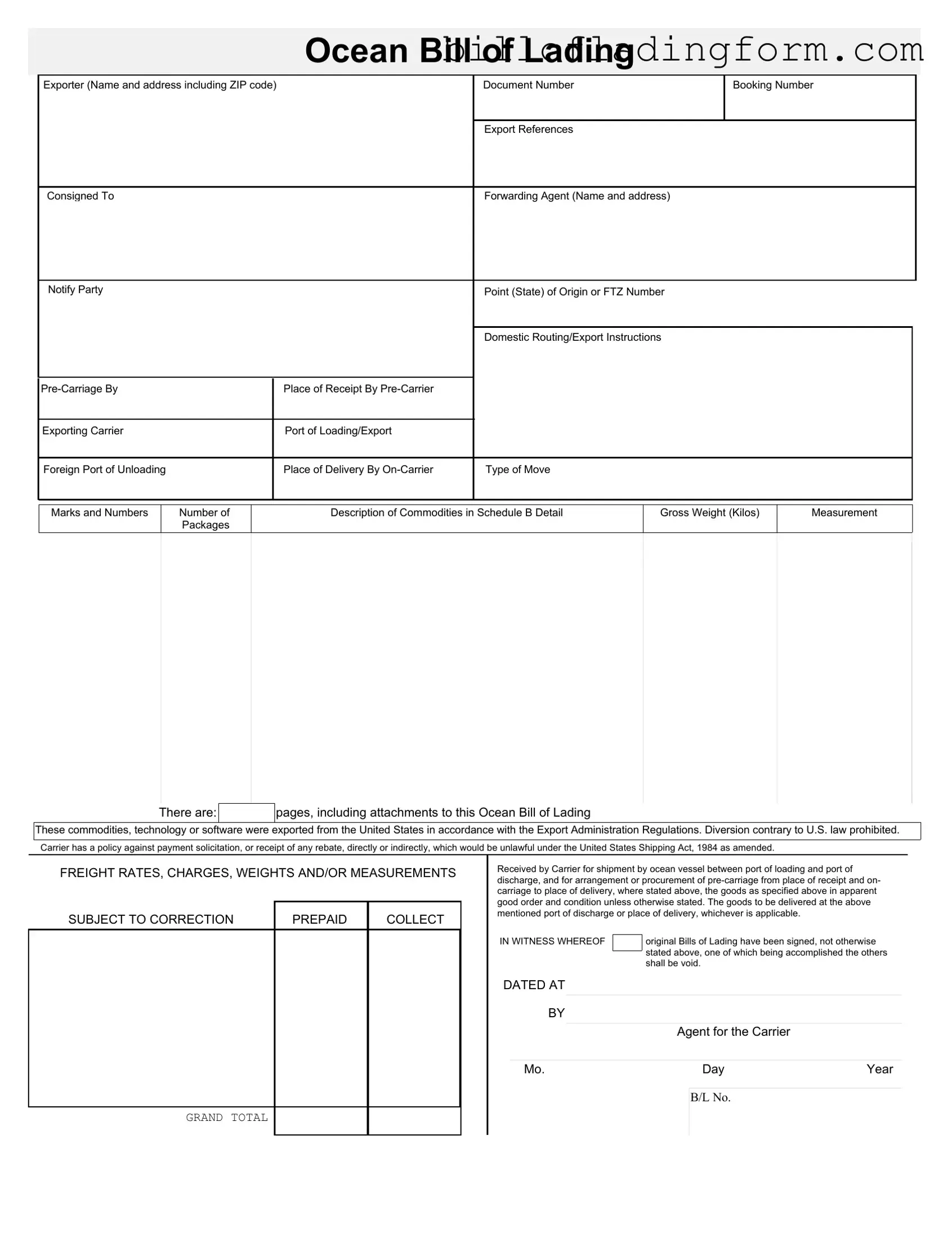The Sample Ocean Bill of Lading form serves as a crucial document in international shipping, facilitating the transportation of goods across borders. This form captures essential information about the exporter, including their name, address, and document number, ensuring that all parties involved have clear identification. It also includes the booking number and export references, which streamline the shipping process. The form designates the forwarding agent and the notify party, ensuring that all stakeholders are informed throughout the shipping journey. Key details about the shipment are recorded, such as the point of origin, domestic routing, and export instructions. The form specifies the exporting carrier, port of loading, and foreign port of unloading, providing a clear logistical framework. Additionally, it details the place of delivery and the type of move, while also including descriptions of the commodities being shipped, their gross weight, and packaging information. Importantly, the form emphasizes compliance with U.S. export regulations, reminding users that diversion contrary to U.S. law is prohibited. It outlines the carrier's policies regarding freight rates and charges, highlighting that these may be subject to correction. The document concludes with a declaration of receipt by the carrier, confirming that the goods are in apparent good order unless otherwise noted. This comprehensive form is essential for ensuring that international shipping proceeds smoothly and in compliance with legal requirements.

